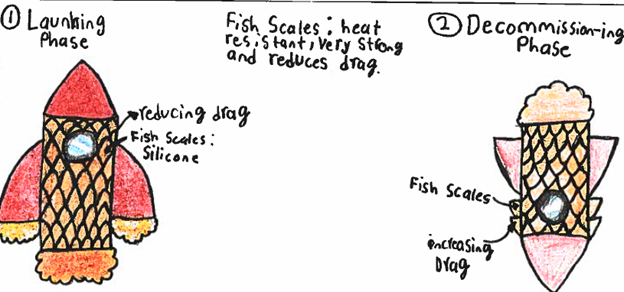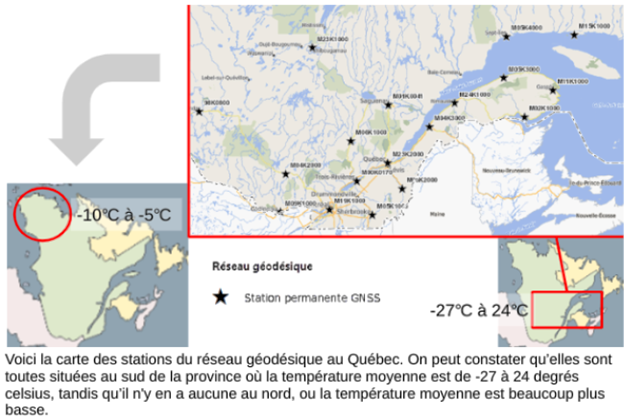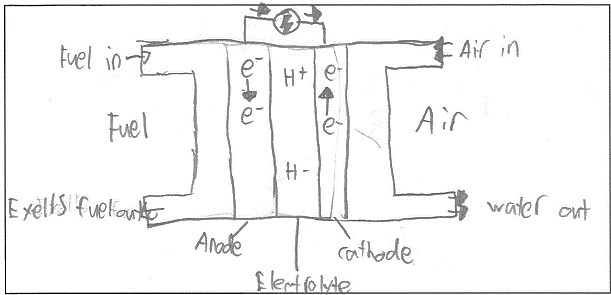Congratulations to the winners of our third Space Brain Hack!

This year's Space Brain Hack challenge, in collaboration with Environment and Climate Change Canada, was to think of solutions to reduce the ecological footprint of satellite missions. Students had to ensure these essential tools are responsibly and sustainably designed, made and operated by finding ways to "green" one phase of a mission's life cycle.
Thank you to all the participants and to the many educators who facilitated the activity. Well done!
And congratulations to everyone whose submission made it to the top, especially our grand prize winners:
- Grade 6 to 8: Adhrith from Waverley Drive Public School in Guelph, Ontario
- Grade 9 to 12: Ben A., Noah, Daniel, Ben T. from Stephen Lewis Secondary School in Thornhill, Ontario
The teams or individuals who submitted the top 3 entries in each category will be invited to take part in a virtual working session with CSA experts, during which they will present their solution to the experts and the other winners and receive feedback about their idea. The grand prize winners will get a virtual visit from a CSA expert or astronaut.
The challenge
As a team or individually, students did some thinking about materials science, the physics of launch, and collecting up satellites that were no longer operational. They also learned about satellites, how they help monitor climate change, how they benefit life on Earth and the life cycle of a satellite mission. We were fascinated by the imaginative ways they envisioned managing space debris.
All submissions were evaluated on the basis of four criteria: communication; innovation; validity; and critical thinking/critical analysis. A panel of CSA experts then did a blind review and ranked the top submissions.
Below are short summaries of the top submissions for each category (grades 6 to 8 and grades 9 to 12).
Note: The drawings appear in the language in which they were submitted.
Grades 6 to 8
First place: International Space Debris Collector System (ISDCS)
Adhrith
Grade 6
Waverley Drive Public School, Guelph
Guelph, Ontario

Text version
Storage area
360° camera
DSAiP
Segregator
Docking port
Smoke
Exhaust
Laser-powered incinerator area
Debris capturing nets
Conveyor systems
Loaders
Opening hatch for collecting debris
Legs
Robotic arms
Debris
AI
Waste
Reuse
Adhrith's idea is to create a system in low Earth orbit that collects the satellite debris with two robotic arms and two nets. They then insert debris into the Opening Latch with the help of the 360° Camera. Once the debris is collected, it travels along the conveyor belt to get it scanned and sorted. The Debris Segregator AI Processor (DSAiP) compares the debris image with pre-trained reference and decides if the debris goes to the Storage Area or the Trash Area. All the reusable debris ends up in the Storage Area and all the unusable debris gets incinerated by lasers in the Trash Area. Annually, a space shuttle can be docked to ISDCS to collect the metal and debris. Reusable debris can be returned to Earth for repurposing and use in other products. Using the ISDCS, we can use these metals and turn them into products that we use in our everyday lives such as phones, cars, and laptops.
Second place: The aqua workers
Grade 6
Macville Public School
Bolton, Ontario

Text version
Fish scales: heat resistant, very strong and reduces drag
Launching phase:
- Reducing drag
- Fish scales silicone
Decommissioning phase:
- Fish scales
- Increasing drag
This team is proposing to cover the rocket they will use to launch their satellite with fish scales made of silicone. Silicone is heat resistant and very strong. In the shape of fish scales, it reduces friction. When the rocket is launching, the scales will go downward to reduce drag. When the rocket comes down to Earth, the scales will go up to slow down the rocket due to drag.
Third place: Project SDS25
Grade 6
Macville Public School
Bolton, Ontario

Text version
SDS25 – The room
Camera built in
(Unreadable)
Tracker
Claw arm
Magnets
(unreadable) satellite
Interior of the room heater and water
- Mycelium slurry sprayer
- Aluminum alloy sprayer
- Air blower
Atmosphere
Earth
This team proposes to decrease the environmental impact during the decommissioning phase by making an aging satellite strong enough using mycelium covered with aluminum, one of the most environmentally friendly metals on Earth. Instead of burning up in the atmosphere, the covered satellite would be pushed back to Earth using magnets to fall safely back on the planet and, we assume, to be recycled. The solution could also be used to pick garbage from the ocean or to make a strong cover for special items that need extra protection.
Grades 9 to 12
First place: Clean-Up Satellite, Tracking Objects, Debris Interaction And Neutralizer (CUSTODIAN)
Ben A., Noah, Daniel, Ben T.
Grade 12
Stephen Lewis Secondary School
Thornhill, Ontario

Text version
Stack of CUSTODIANs
Rocket
Debris
Whipple shield
Thrusters
Side ~2 m
Gel
~1 m
Front
Ground-based debris tracking
Earth
The solution is to design a movable satellite that picks up space debris using aerogel. A Whipple shield will slow and break down the debris enough to be caught by the gel. When it is time to decommission the satellite, it will propel itself into Earth and burn up in the atmosphere, along with the debris it collected. To make the satellite not contribute to space pollution, it can be launched inside a reusable rocket.
A similar idea could be used to clean up garbage in the ocean by using underwater drones that carry a material-capturing gel around in the deep sea, microplastics can be swept up before entering the food chain.
Second place: Station de données nordiques
Grade 9
Collège Mariste de Québec
Quebec City, Quebec

Text version
Réseau géodésique = Geodetic network
Station permanente GNSS = Permanent GNSS station
-27°C à 24°C = -27 °C to 24 °C
Paragraph at the bottom of the image = This is a map of stations in the geodetic network in Quebec. The map shows that they are all located in the southern part of the province, where the average temperature is from -27 °C to 24 °C, and there are none in the north, where the average temperature is much lower.
The team proposes to move satellite control centres and satellite data reception systems to northern Canada, like the ground station located in Inuvik, Northwest Territories. This would allow the systems to be powered by “sun fields” and the data servers could be cooled down naturally thanks to the cold weather, reducing energy consumption. The team reflected on the costs and the greenhouse gas emissions generated by the workers' increased travel to the North. They also thought about the possibility of redistributing the heat from the server.
Third place: Mission water fuel
Grade 9
École Champs Vallée School
Beaumont, Alberta

Text version
Fuel in
Air in
Fuel
Air
Exhales fuel out
Water out
Anode
Cathode
Electrolyte
This team proposes to use an oversized fuel cell to split hydrogen and oxygen at a quick enough rate to create a steady fuel supply that would generate water vapour instead of greenhouse gases. These engines could be applied to many forms of travel: planets, trains, cars, boats.